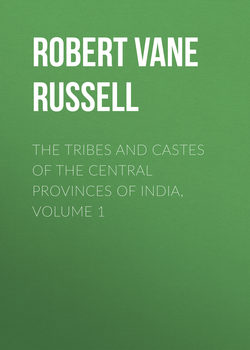Читать книгу The Tribes and Castes of the Central Provinces of India, Volume 1 - Robert Vane Russell - Страница 17
Part I.
Introductory Essay on Caste
Introductory Essay on Caste
14. Mistaken modern idea of the Vaishyas
ОглавлениеThe demonstration of the real position of the Vaishyas is important, because the Hindus themselves no longer recognise this. The name Vaishya is now frequently restricted to the Bania caste of bankers, shopkeepers and moneylenders, and hence the Banias are often supposed to be the descendants and only modern representatives of the original Vaishyas. Evidence has been given in the article on Bania to show that the existing Bania caste is mainly derived from the Rājpūts. The name Bāni, a merchant or trader, is found at an early period, but whether it denoted a regular Bania caste may be considered as uncertain. In any case it seems clear that this comparatively small caste, chiefly coming from Rājputāna, cannot represent the Vaishyas, who were the main body or people of the invading Aryans. At that time the Vaishyas cannot possibly have been traders, because they alone provided the means of subsistence of the community, and if they produced nothing, there could be no material for trade. The Vaishyas must, therefore, as already seen, have been shepherds and cultivators, since in early times wealth consisted almost solely of corn and cattle. At a later period, with the increased religious veneration for all kinds of life, agriculture apparently fell into some kind of disrepute as involving the sacrifice of insect life, and there was a tendency to emphasise trade as the Vaishya’s occupation in view of its greater respectability. It is considered very derogatory for a Brāhman or Rājpūt to touch the plough with his own hands, and the act has hitherto involved a loss of status: these castes, however, did not object to hold land, but, on the contrary, ardently desired to do so like all other Hindus. Ploughing was probably despised as a form of manual labour, and hence an undignified action for a member of the aristocracy, just as a squire or gentleman farmer in England might consider it beneath his dignity to drive the plough himself. No doubt also, as the fusion of races proceeded, and bodies of the indigenous tribes who were cultivators adopted Hinduism, the status of a cultivator sank to some extent, and his Vaishyan ancestry was forgotten. But though the Vaishya himself has practically disappeared, his status as a cultivator and member of the village community appears to remain in that of the modern cultivating castes, as will be shown subsequently.
